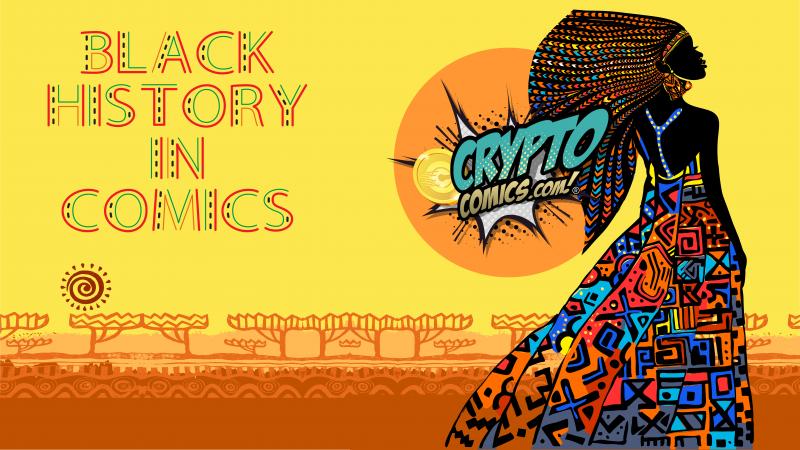by Matthew Russell - Posted 2 years ago

Welcome my CryptoComics Compatriots. Today marks the last day of Black History Month. I wanted to our unique history in the comic medium. Comics have been a popular form of entertainment for decades, and the industry has come a long way in terms of representation and inclusivity. However, it wasn't until recent years that the contributions of Black creators and characters in comics began to be recognized and celebrated. This article takes a look at the history of Black representation in comics and the impact that Black creators and characters have had on the industry.
In the early days of comics, Black characters were often portrayed as stereotypical and dehumanized, with limited depth and agency. However, as the Civil Rights movement gained momentum in the 1950s and 1960s, Black characters began to be depicted with more nuance and complexity. This shift was largely due to the efforts of Black creators and writers, who used the medium to address important social and political issues and to challenge the negative stereotypes that had been perpetuated in popular culture.
Lothar, the African sidekick of Mandrake the Magician, first appeared in 1934.
The Bronze Bomber was a hero created by Will Eisner and introduced in 1940.
Wash Tubbs and Captain Easy, were characters introduced in 1929 and 1930 respectively, and created by Roy Crane.
The Black Hood, a superhero first appeared in 1940.
The Spirit's Ebony White is a sidekick created by Will Eisner in 1940.
These characters, though groundbreaking for their time, were often stereotypical and portrayed in a negative light. However, in the late 1960s and early 1970s, the Black Power Movement inspired the creation of more positive black characters in comics, such as the Falcon and Luke Cage.
The 1990s and 2000s saw a surge in the number of Black creators in the comics industry, as more and more Black artists, writers, and editors found their place in the industry. This wave of Black creators brought with them fresh perspectives and new ideas, helping to shape the direction of the industry and to push for greater representation and inclusivity. Some of the most influential Black creators in this period include Dwayne McDuffie, Christopher Priest, and Milestone Comics, who used their platforms to tell stories that were reflective of the Black experience and to challenge negative stereotypes.
Black characters have also made a significant impact in the comics industry, serving as important role models and inspiring countless fans. From trailblazing characters like Luke Cage and Storm, to more recent heroes like Black Panther and Miles Morales, Black characters have played a key role in shaping the direction of the industry and in helping to bring a greater level of diversity and inclusivity to the medium. These characters have also served as powerful symbols of resistance and hope, providing inspiration and comfort to millions of fans around the world.
In conclusion, the contributions of Black creators and characters in comics cannot be overstated. Through their work, Black creators and characters have challenged negative stereotypes, pushed for greater representation and inclusivity, and inspired countless fans. As the industry continues to evolve and grow, it is important that these contributions be recognized and celebrated, so that future generations of Black creators and characters can continue to shape the direction of the industry and to make their mark on the world of comics.